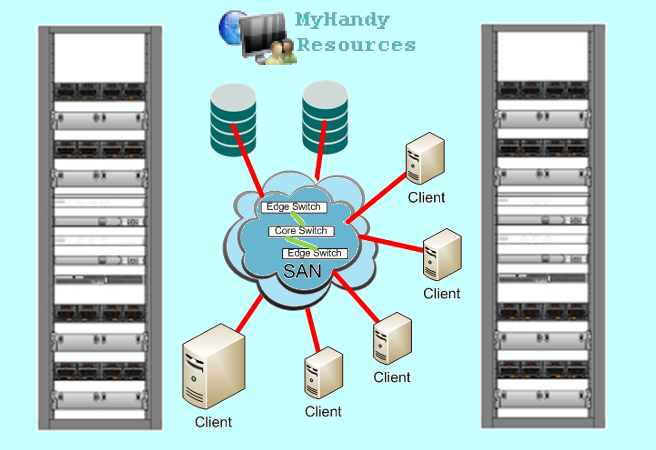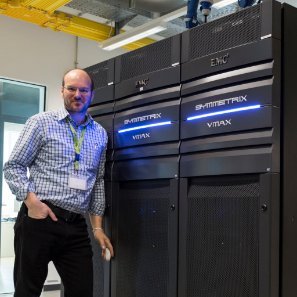About Us
Welcome to Myhandyresources
This is my site for all things relating to Information Technology (IT) and Web development.
I have been working in the IT industry for over 25 years now, primarily as a UNIX administrator but for the last 7 years I have been working as a SAN System Engineer.
Over the years I have been involved in many projects, these include:
- Planning, Installation and configuring virtual Storage environment (EMC VPLEX & VMAX 10K with Brocade DCX Directors) in a new data centre
- Installing and configuring NAGIOS to monitor several SANs and Solaris Servers running Netbackup and SAMFS
- Upgrade several Core/Edge Brocade switches and EMC CLARiiON storage arrays with new DS-5100/5300 FC Switches and CX4-480 storage arrays.
- Installation and configuration of new FC Switches and CX4 Storage Array, including validation tests with connected servers(AIX/Solaris/RHEL/Windows)
- Planning and supporting Firmware upgrades on FC Switches and CLARiiON Storage Arrays.
- Oracle/Solaris 10 installation and Cluster 3.2 installation with Netbackup 6.5 and SAMFS
- HTML, PHP and MySQL Web development
I am always looking forward to new challenges within the IT industry especially with the current fast pace that technology is changing.
I Hope you enjoy my website.
Best Regards,
Dave Richards.
Storage Area Networks
Storage Area Networks (SAN) are currently going through a revolution and customers have some technical challenges ahead.
Some applications need to remain with the traditional style Fibre Channel Storage Arrays, new virtualised or cloud environments have several choices when it comes to technology.
Connectivity
Customers now have a choice of traditional FC based storage or moving to “converged networks” which combines traditional network traffic with Block storage traffic. The big vendors are producing network switches that combine IP data and FCoE (FC over Ethernet) traffic.
The backbone of the SAN has been based on dedicated FC switches and directors but the new era of Cloud computing brings “converged networks”, Server-SAN and VSAN.
Storage
Vendors have been moving away from FC backend buses to SAS buses, latest storage arrays utilize SSD, SAS, and NL-SAS (SATA) disks.
Virtual Storage
EMC and IBM both have dedicate hardware offerings for Virtualised Storage, these systems sit between the host clients and the storage providing a virtual layer. This enables the SAN administrator to provision storage from any backend array and enable them to easily migrate volumes to another array for performance or obsolescence without impacting the connected hosts.
The EMC VPLEX two main features are:
- Volumes are encapsulated – VPLEX does not change the volume provisioned by the Storage Array so a host can always go back to directly attaching to the storage array.
- Distributed volumes – VPLEX (requires Metro or GEO option using 2 VPLEX Clusters) creates a mirrored volume with data written across 2 different storage arrays, offloading the I/O workload from the traditional host-based mirroring. The VPLEX clusters can be in the same location (different buildings) or for Disaster recovery have 2nd cluster at a remote site.
News
More to come on emerging technologies…
Data Protection
In the past many companies only backed up their data for disaster recovery purposes, nowadays IT departments realize that a large percentage of the companies data is static and must be archived for long term preservation; either for security or Legal requirements.
A continuous analysis of your data is needed before deciding whether to use Backups or an Archive service.
Example: A customer was saving data from a growing filesystem using traditional backups, 2 yrs later and 2TB of static data was being backed up every weekend (3x LTO tapes) which was retained for 1-5yrs (150 Tapes a year). After changing over to using an archive service only 20GB a week was copied to tapes (6 Tapes a year). A huge saving in media and offsite storage costs.
Backups
Most popular backup software used by companies is Symantec Netbackup or EMC Legato, these provide server software that communicates over Ethernet network to software installed on the client.
Most modern backup software also provide backups via the SAN reducing the time that applications need to be offline, Storage snapshots can be deployed and the backups made at the server; releasing the client from any I/O load.
Archiving
Companies are amassing large amounts of data that never changes but has to be kept (i.e. photos, legal documents), to preserve this data and free up expensive storage companies are using Archive facilities.
The purpose of the archive service is to make copies of the data on inexpensive media that can be stored in a secure location, also to allow users fast access to recover the data if needed.
Archive data should always be written to multiple media types (LTO, Storage T10K, IBM 3592), for instance one of my customers archives data to the following media:
- T10K media – 1st copy of data written, all data read from this copy as the media has good MTBF for mount/reads.
- LTO media – 2nd copy of data written and full tapes sent off site to a secure facility.
- MAID Array – 3rd copy of important data kept online for fast access





